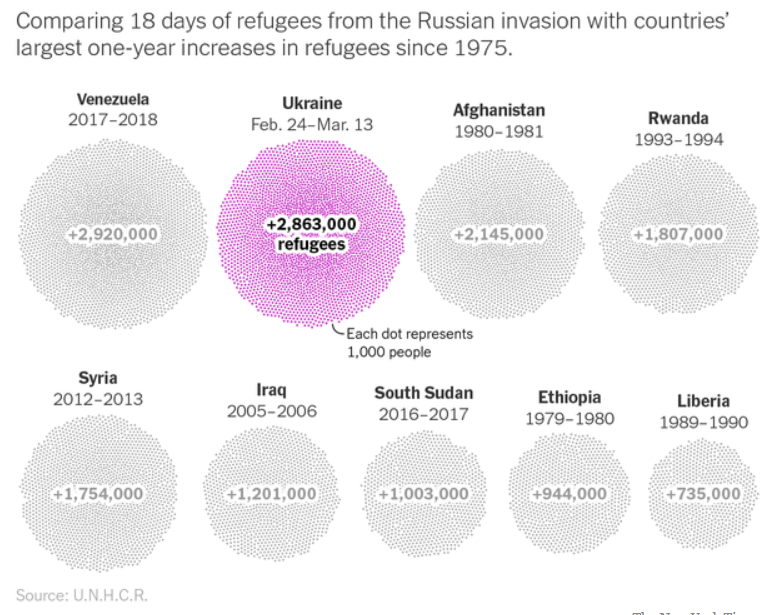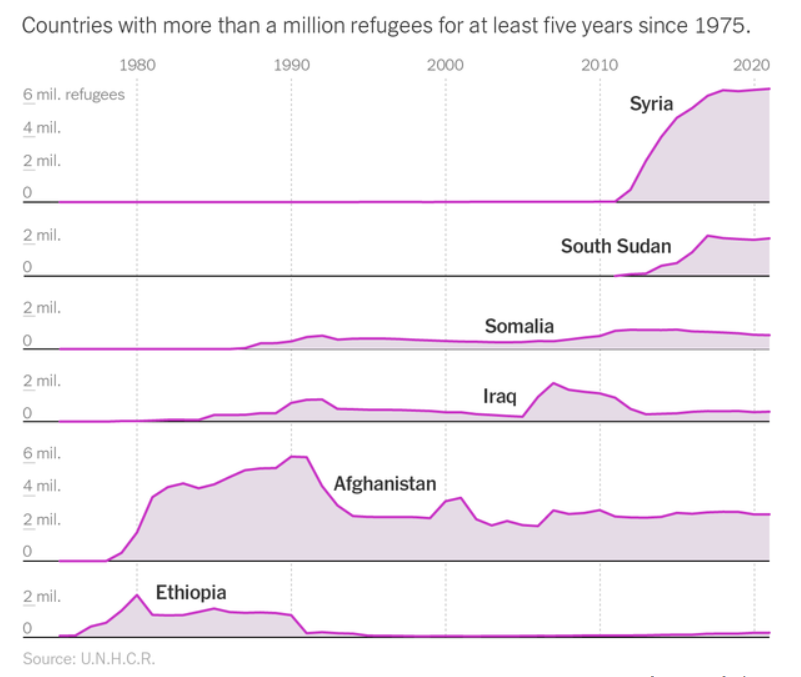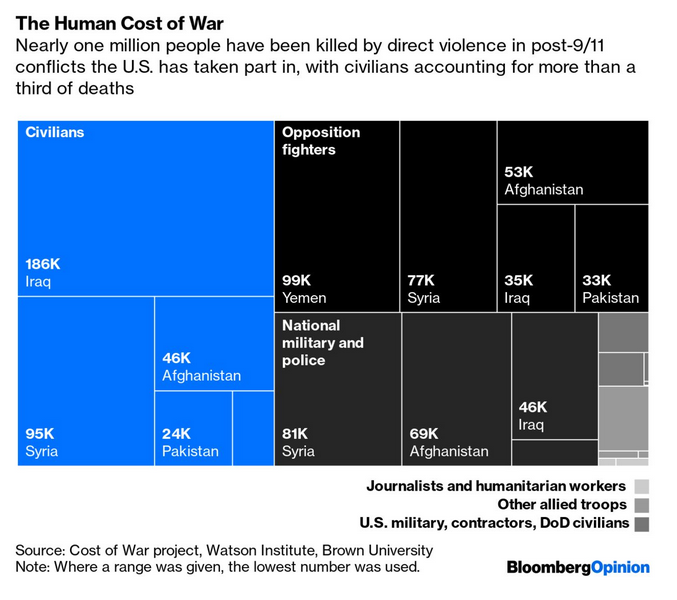|
You
can also view the message online
|
|||||||||||||
 Châtenay-Malabry (FR - 92290), April 04, 2022 EFITA newsletter / 1033 - European Federation for Information Technology in Agriculture, Food and the Environment Do not miss the Virus Jokes in English and French The informatique-agricole.org site now offers you the possibility of subscribing the RSS feeds of its two newsletters See RSS feeds to implement to ensure that you continue to receive this newsletter To unsubscribe this newsletter, please contact me directely: guy.waksman(a)laposte.net if this link Unsubscribe does not work. Please note that I changed the presentation of the links that are embedded in the name of the web service. 
To correspond with me (GW), please use this address: guy.waksman(a)laposte.net To subscribe the efita newsletter (please ask your friends and colleagues to test this link) Efita Newsletters subscription Before computers Weekly newsletters about ICT in Agriculture in English and French Both newsletters have around 14000 subscribers. >>> Last weekly EFITA Newsletters in English (created in 1999) Efita Newsletters >>> Last weekly AFIA Newsletters in French (created more than 20 years ago in 1997) Afia Newsletters >>> Statistics for the last efita newsletter >>> Last issue of the afia newsletter >>> Last available satistics for the afia newsletter Mick Harkin Hi Guy - a nice tribute to Mick in the Newsletter. He was a lovely guy who we all laughed with in bars across Europe, but he also had a serious, uncompromising approach to the business of Agro Informatics. Like you, I'll miss him. The world is a better place for Mick having been with us. Regards, Contact: Andy OFFER E-mail: andy(a)whylehouse.co.uk Femmes cousant de Camille Pissarro The Future of Biogas Summit 2022 23-24 November 2022 - Amsterdam With ever increasing demand for GHG emissions reduction, Biogas has never been in higher demand. Following updated EU targets, it is clear the industry must grow, which brings both challenges, and great opportunity. The conference will discuss the key legislative changes regarding biogas, a broad review of the biogas industry, as well as key developments that the industry must adapt to grow, and meet growing demand. Biogas’s role in fighting climate change, and importance in heavy industry will also be highlighted. Finally, Biogas feedstock requirements, challenges and opportunities will be discussed, as well as an assessment of alternative biogas uses, with an outlook to exploring new markets. ACI is delighted to announce the Future of Biogas Europe 2022 Summit, taking place in Amsterdam, The Netherlands, on the 23rd and 24th of November 2022. The two day event will bring together senior executives and experts from the full value chain and provide a forum for all parties active in the field of anaerobic digestion of organic matter and renewable energy production in the form of biogas. The conference will provide our delegates with interactive sessions, panel discussions, conference presentations and networking opportunities to discuss the challenges and latest trends in the bioenergy industry. See wplgroup.com Webinar: How data can help farmers make better decisions Farmers are collecting a wealth of data. It might take time but eventually this is going to help them to make better decisions, two precision agriculture specialists explained during the Future Farming Webinar ‘From the virtual field to the real field’. See futurefarming.com With Ukraine farmers on frontlines, UN food chief warns of 'devastation', by Reuters, by Michelle Nichols ( Thanks you Mr Putin!) UNITED NATIONS, March 29 (Reuters) - The U.N. food chief warned on Tuesday that the war in Ukraine was threatening to devastate the World Food Programme's efforts to feed some 125 million people globally because Ukraine had gone "from the breadbasket of the world to breadlines." "It's not just decimating dynamically Ukraine and the region, but it will have global context impact beyond anything we've seen since World War Two," WFP Executive Director David Beasley told the 15-member United Nations Security Council. Beasley said 50% of the grain bought by the WFP, the food-assistance branch of the United Nations, comes from Ukraine, "so you can only assume the devastation that this is going to have on our operations alone." "The farmers are on the frontlines," he said. .../... See reuters.com Covid-19 update Hong Kong’s recent confirmed COVID death rate has been one of the highest of the pandemic Until recently, Hong Kong was faring very well during the pandemic, with a cumulative confirmed death rate 80- to 100-times lower than countries such as the UK, US, and Italy. That has changed significantly in the past six weeks, as Hong Kong has experienced one of the highest death rates of any country in the pandemic. Hong Kong’s cumulative death rate is now less than 3-times lower than the UK. Why did this happen? Hong Kong’s oldest and most vulnerable people are also among its least vaccinated. For example, the share of 20–49 year olds who are fully vaccinated is between 80–95%, while the share for those 80 years and older is just 41%. → Explore our global vaccination dataset, alongside cases, deaths, hospitalizations, testing and other metrics by country in our COVID-19 Data Explorer. How did we see the future yesterday?? See the incredible collection developed by Alain Fraval Malaria: One of the leading causes of child deaths, but progress is possible and you can contribute to it We do not have to live in a world in which 1,320 children die every day from a disease that is preventable—malaria. This makes malaria one of the leading causes of child mortality. We know that progress against malaria is possible because it was once prevalent in many parts of the world that are free of it today. How have we made this progress, and how can we continue? Economic development has played a key role, but this is a slow process. There are opportunities right now to protect people from malaria—with the use of insecticide-treated bed nets. This simple and cheap technology has saved millions of lives in the last few years. As we explain in the article, each of us can individually contribute to this progress right now by making a donation to the organizations that are achieving this change—for example by following the donation recommendations at GiveWell.org. Simple and efficient: the ISARIA system To remain fit for the future in agriculture, there is no way around smart farming. The ISARIA system supplies the crop with what it really needs and paves the way to digital agriculture. > Efficient crop management. Agricultural fields are often very heterogeneous. The ISARIA plant sensor enables the intelligent exploitation of yield potential. > Intuitive and simple data management. Central data management is becoming increasingly important. ISARIA helps to keep an eye on important data. > Trustworthy partner. ISARIA stands for quality and know-how. We support farmers on their way to a secure future. See isaria-digitalfarming.com Gelée blanche à Ennery de Camille Pissarro Future Farming >Controlled Row Farming: Making a profit while promoting biodiversity German company Amazone is testing new technologies in Controlled Row Farming (CRF) to generate good yields and profits together with a maximum contribution to biodiversity. Both goals should be met but ideally also support each other. “Farmers should have a toolbox, with different options”, says Stefan Kiefer, Head of Innovation in Crop Production at Amazone. > Real-time soil moisture sensors to optimise planting success > The power of SWAT MAPS > Salin 247 puts autonomous electric planter to the test > Horsch shows second robot, two more to follow > Field Trials podcast – a grain grower’s perspective on Nexat > New barley varieties can cut costs and build greener planet > Rhizobia strains with increased tolerance to soil acidity > Plant gets leading role in spot-farming cultivation process > Buying guide: 15 universal autosteer systems to choose from Do you want to plant straight easily? Check out our buying guide with 15 universal autosteer systems to choose from. > Priva Kompano: World’s first leaf-cutting robot Priva, the Dutch horticultural innovator, developed the first fully automated leaf-cutting robot for tomato crops and it’s called Kompano. This robot is one of the first mobile robots the company aims to introduce based on its autonomous platform. > Expert opinion: New gene editing regulations will advance biological crop protection The result will be less crop protection chemicals, improved sustainability, lower carbon footprint and better work conditions for farmers. > Soil health: Digital map shows carbon stocks in Brazilian soil The Brazilian Agricultural Research Corporation (Embrapa) presented an updated version for its digital maps showing carbon stocks in all Brazilian territory. This information could help farmers adopt sustainable tillage practices and makes them eligible for carbon credits. > Spraying technology: Australian initiative to minimise spray drift The Australian grains and cotton industries have announced a US $ 4.07 million investment to help minimise spray drift through a five-year partnership with Australian agtech company Goanna Ag. > Controlled Row Farming: Making a profit while promoting biodiversity German company Amazone is testing new technologies in Controlled Row Farming (CRF) to generate good yields and profits together with a maximum contribution to biodiversity. Both goals should be met but ideally also support each other. See futurefarming.com Jardins potagers de Camille Pissarro Koidra Raises $4.5M Seed Funding to Bring Intelligent Automation to Greenhouses and Beyond Koidra was founded by the lead of Microsoft Research's winning team at the inaugural Autonomous Greenhouse Challenge. See precisionag.com How Gro Intelligence Is Supporting Global Food Security Amid Russia-Ukraine War The AI company's resources web page for humanitarian organizations allows you to track the implications for global food security on a real-time basis. See precisionag.com A Profitable Tool With a Side of Sustainability, by Yara Yara’s Adapt-N software is a field-proven innovation for measuring nitrogen uptake in corn and gives operators complete control in how they configure individual fields. See precisionag.com Raven Opens Advanced Engineering Center in Arizona, Expands Innovation Campus in South Dakota As demand for ag tech accelerates, Raven facilities expansions will enhance development in AI, autonomy, machine learning and core technology. See precisionag.com Realizing the Potential for AgTech in Alberta SVG Ventures | THRIVE are delighted to elevate the voice of the Albertan farmer through the release of their latest report. See precisionag.com New Sensor-to-Satellite Technology Delivers Global Connectivity for Smart Agriculture Wyld Networks has announced the availability of its new range of low-power, sensor-to-satellite terminals and modules. See precisionag.com Femme assise sur le sol de Camille Pissarro A new agtech robot enters the crop monitoring category, TechCrunch, by Brian Heater (feat. Solinftec & Verdant) I’ve suddenly found myself writing a lot about agtech of late. Maybe it’s because spring officially sprung over the weekend – or perhaps it’s that pesky impending environmental collapse that’s frequently top of mind. Whatever the case, I’ve mostly been lamenting a general lack of traction among robotics in the category, so I’m always happy to see a new contender emerge. A lot of this stuff is also probably top of mind given that the World Agri-Tech Summit is currently happening in San Francisco. Today at the event, Growmark and Solinftec announced a partnership set to bring an unnamed agtech robot to the market. The product is being field-tested for the remainder of the year, and the companies are planning/hoping to bring it to market at some point in 2023. The robot functions similarly to a number of products we’ve seen attempting to address a potentially large market, including recent addition Verdant and a bunch of startups John Deere keeps buying. It effectively rides around the field autonomously, scanning for things like crop health and nutrition, along with potential trouble areas like pests and weeds. That information is collated and sent to the farmer for action. “We’re taking our robot directly to the fields for practical implications,” Solinftec COO Daniel Padrão said in a release. “This cutting-edge technology will help develop agricultural solutions and support sustainable farm practices. We are honored to have such a progressive partner as Growmark to move forward with this first launch as we continue to work together to support farmers on seizing the opportunities in agriculture.” .../... See techcrunch.com Paysanne buvant son café au lait de Camille Pissarro An eventful week for African agtech as 2 startups raise close to $100m, AFN, by Lucy Ngige Two African agritech startups secured close to $100 million in financing between them this week in a watershed moment for the continent’s agrifoodtech scene. Kenya’s Apollo Agriculture, which helps small-scale farmers maximize their profits by providing them with advice, financing, farm inputs, insurance, and market access, raised $40 million. The Series B equity investment was led by Softbank Vision Fund 2. Existing investors including Anthemis Exponential Ventures, Flourish Ventures, Leaps by Bayer, SBI Breyer Capital, and TO Ventures Food also participated alongside new investors such as Yara Growth Ventures, Endeavor Catalyst, CDC Group, and the Chan Zuckerberg Initiative. Meanwhile, Nigeria’s ThriveAgric received $56.4 million in debt financing. Following the $9 million the startup raised in 2020, this latest capital injection comes from institutional investors and includes a $1.75 million co-investment grant from USAID-funded West Africa Trade & Investment Hub as support for its continued commitment to strengthening agricultural value chains in Nigeria. …/… See agfundernews.com Rockets lost by the Russian army and found by a UKR farmer 18 days of refugees from the Russian invasion Countries with more than a million refugees
Where refugees are going? A seismic shift in the ownership of Chinese stocks Cutting oil demand Lending more profitable than building cars
The wind carries a shipping revolution Shipping is an energy-efficient way of transporting goods. Despite this, shipping needs to become more sustainable. Maritime transport emits around 940 million tonnes of CO2 annually and is responsible for about 3% of global greenhouse gas emissions, even more than airplanes If the industry was a country, it would be the sixth biggest polluter, above Germany. These emissions are projected to increase significantly if mitigation measures are not put in place swiftly. If we continue business-as-usual, the emissions will increase with 50%-250% by 2050, according to International Maritime Organisation (IMO). IMO has set a goal of reducing CO2 emissions by 40 percent per transport work from international shipping by 2030 compared to 2008. Oceanbird want to take de-carbonisation one step further, contributing to changing, updating, and remodeling an entire industry. John Stuart Mill, a 19th-century philosopher who advocated for freedom of expression, the abolition of slavery, and women’s suffrage The only purpose for which power can be rightfully exercised over any member of a civilized community, against his will, is to prevent harm to others. See video - Heroes of Progress - Ep. 41 See humanprogress.org Ag Day 2022: Growing A Climate for Tomorrow, March 22, 2022, by Amanda. I’m the proud daughter (and sister!) of conventional farmers in Southwest Michigan Happy National Ag Day! This year the theme of Ag Day is “growing a climate for tomorrow.” It’s an incredible opportunity to brag about agricultural production in the U.S. Why? Because modern agriculture is a leader in sustainability! Here’s the proof: Beef. U.S. beef producers have reduced GHG emissions per pound of beef by more than 40%, while also producing more than 66% more beef per animal since 1961. GMOs. Adoption of genetically modified crops has reduced chemical pesticide use by 37%, while increasing yields by 22%. Soybeans. Over the past 25 years, soy growers have decreased energy use per tonne of soybeans by 46%. Dairy. From 2007 to 2017, U.S. milk production used 30% less water, 21% less land, and had a 19% smaller carbon footprint. Corn. Between 1980 and 2015, corn growers reduced soil erosion by 58%, energy use by 41%, and GHG emissions by 31% Eggs. From 1960 thru 2010, egg production in the U.S. lowered its GHG emissions by 71%!! Today’s hens produce 27% more eggs and live longer than ever. See thefarmersdaughterusa.com Agriculture giants stay in Russia despite calls to exit over Ukraine war, The Wall Street Journal, by Patrick Thomas Grain traders and seed companies cite humanitarian concerns about food supplies as advocacy groups try to raise pressure on Moscow. See wsj.com As sanctions bite Russia, fertilizer shortage imperils world food supply, by Tom Polansek and Ana Mano Sky-high fertilizer prices have farmers worldwide scaling back its use and reducing the amount of land they're planting, fallout from the Ukraine-Russia conflict that has some agricultural industry veterans warning of food shortages. Western sanctions on Russia, a major exporter of potash, ammonia, urea and other soil nutrients, have disrupted shipments of those key inputs around the globe. Fertilizer is key to keeping corn, soy, rice and wheat yields high. Growers are scrambling to adjust. .../... See reuters.com La conversation de Camille Pissarro World population and arable land 1960-2020 (source FAO) While the world population grows, the available arable land area shrinks... Scarily fast diminishing fish stocks Global Forest Resources Assessment 2020 Globally, forests cover approximately 1/3 of the land. The tropical domain has the largest proportion of the world’s forests. More than half of the world’s forests is in only five countries – the Russian Federation, Brazil, Canada, the United States of America and China. Already since the end of the 1940´s the UN Food and Agriculture Organisation assesses the world´s forest resources. It has evolved into a comprehensive evaluation of forests´ condition, management and uses. The Power of Purple: GMO tomato could help fight cancer, by Modesta Abugu, March 8, 2022 See allianceforscience.cornell.edu Center of Progress: Memphis, an ancient Egyptian capital that greatly advanced humanity’s understanding of medicine. Physicians in Memphis developed rational medical treatments and pioneered foundational concepts like prognosis and diagnosis. See humanprogress.org In recent months, nuclear power has had a political resurgence But things are moving in the right direction in the private sector as well. According to Pitchbook research reported in Bloomberg, "last year, venture investors plowed a record $3.4 billion into nuclear startups — more than in every year over the past decade combined." Israeli researchers find a new, natural weapon for fighting cancer Natural antibodies found in tumors could point the way toward improved immunotherapy, according to a new Weizmann Institute study, a potential cancer breakthrough. A new study could lead to a breakthrough against cancer in the form of immunotherapy, which will exploit a unique immune system weapon in the battle against cancer: naturally produced antibodies. Antibodies are proteins that neutralize specific threats. Other recent studies have found that naturally occurring antibodies have often been discovered in cancerous tumors, but their purpose was unknown – they might very well have been generated by the body, without any relation to the cancer itself. Indirect evidence, however, had suggested that they do offer some sort of antitumor benefit: patients who survive longer than others and are more responsive to anticancer drugs were found to have higher concentrations of the antibody-producing B cells in their tumors. Still, there was no way of determining whether these cells, and the antibodies they produce, contribute to improved survival, and if so, how they accomplish that. .../... See jpost.com La maison Rondest à Pontoise
The distribution of this efita newsletter is sponsored by vitisphere.com Please, contribute to the content of your efita newsletter, and advertise your events, new publications, new products and new project in this newsletter. Without your support, it will not survive! Contact: Guy WAKSMAN E-mail: guy.waksman(a)laposte.net To read this newsletter on our web site See Efita The archives of this newsletter See Efita About the EFITA mailing list You can use the efita moderated list (> 15000 subscribers) to announce any event / product / web site / joke (!) related to IT in agriculture, environment, food industry and rural areas. If you want to subscribe a friend, please fill in his form. If you do not wish to receive our messages, please fill in the following form... |



























